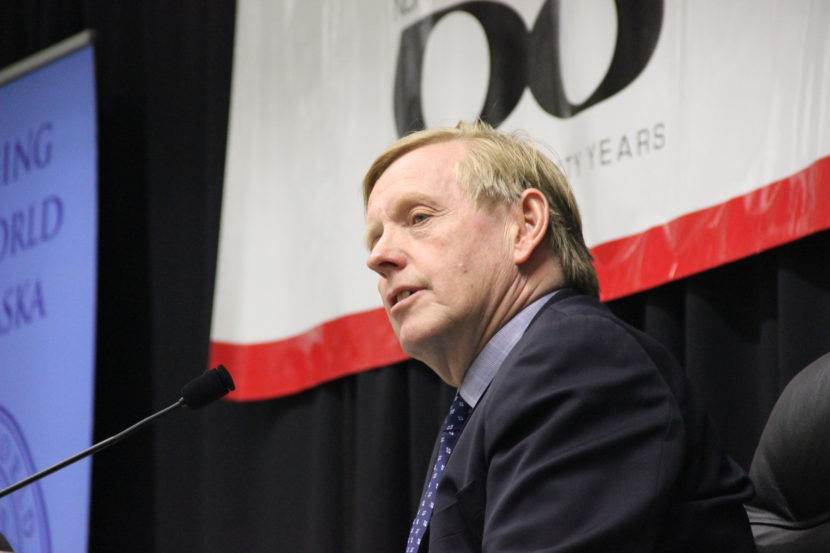
An oil-dependent economy straddling the Arctic Circle, battered by low prices but sitting on a massive savings account. That could describe Alaska, but it also describes Norway.
Norway’s ambassador to the United States is in Alaska this week, to celebrate that country’s May 17 Constitution Day with Norwegian Americans in Anchorage and Petersburg.
But he couldn’t avoid questions about how his country is handling low oil prices — and what Alaska might learn from Norway’s example.
At the Anchorage Chamber of Commerce, Lise Falskow, of the Alaska World Affairs Council, asked Norwegian Ambassador Kare Aas whether he had any advice for lawmakers in Juneau struggling to close a $4 billion budget hole.
“I don’t,” Aas said, to laughter.
But, he said he could talk about what’s happening in Norway — where, for the record, he said, nobody is freaking out.
Because while Alaska and Norway have plenty in common — including a northern location, economies built around oil and gas, and massive savings accounts — there are also some major differences.
For starters, Norway’s economy is far more diversified, Aas said, pointing to the maritime industry, fisheries, IT, tourism — and one sector anathema to many Alaskans: farmed Atlantic salmon.
In all, he estimated Norway only gets about 20 percent of government revenue from oil and gas. That’s compared with nearly 90 percent of unrestricted state funds in Alaska just a few years ago.
And while Norway founded its sovereign wealth fund some two decades after Alaska, it’s grown to more than $850 billion. Alaska’s Permanent Fund currently has about $53 billion.
Aas said there is broad consensus that Norway’s fund must be saved for a post-oil future.
“The basic idea, that this is for the next generation and generations after that, is so solid, so part of, I would say, the Norwegian society,” he said.
The Norwegian government can use a percentage of the fund’s value to cover budget needs, though this year marked the first time ever that it exercised that right. That design is similar to a proposal before the Alaska Legislature to draw on Permanent Fund earnings to fund state government.
Another key difference? Norway never got rid of its taxes — a point raised by a member of the Anchorage audience, who asked if Norway still has an income tax. “Oh yes,” Aas said.
“We have income tax. We have a sales tax of 25 percent,” he said. “We have probably the highest gasoline prices in the world.”
One result of all these policy differences, Aas said, is that unlike Alaska, where lawmakers are struggling to cut state spending, Norway’s government has expanded spending in the face of low oil prices, in an attempt to stimulate the economy and soften the impacts of job losses in oil-dependent regions.